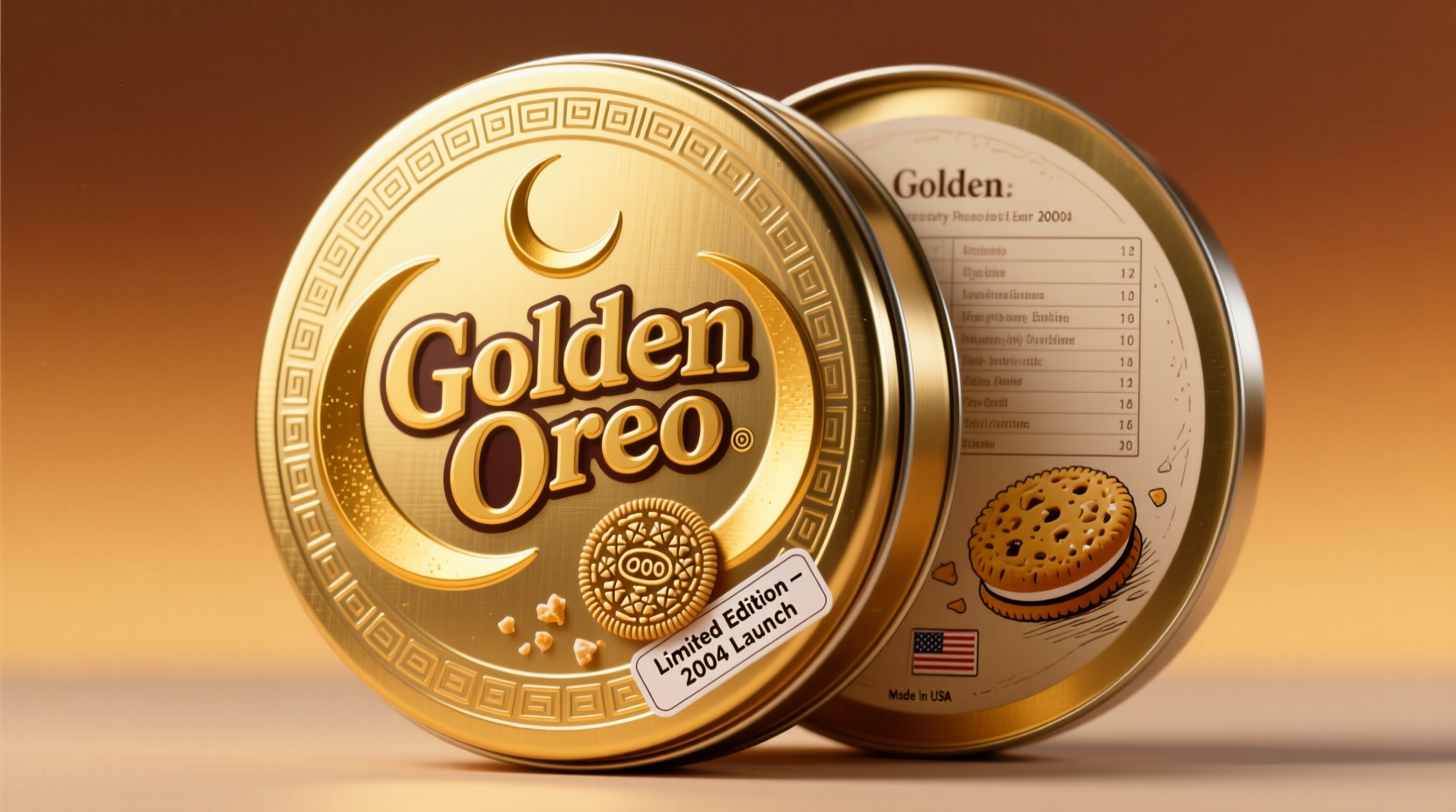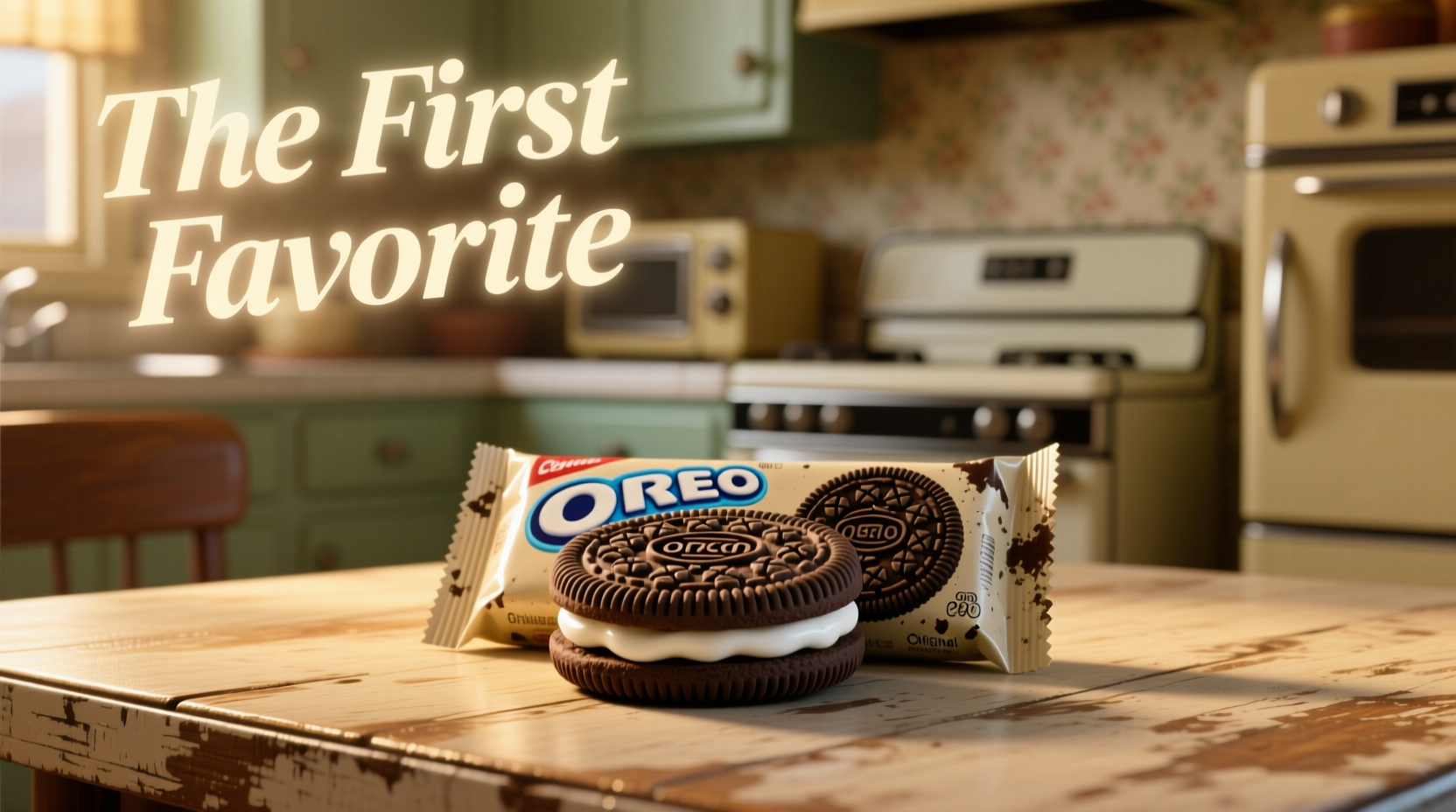From Chocolate Classic to Golden Innovation: The Evolution of Oreo Flavors
For over 90 years, the iconic chocolate sandwich cookie remained unchanged since its 1912 debut. While Nabisco tested various concepts, the Golden Oreos launch in 2004 represented the first alternative flavor that achieved mainstream success and became a permanent addition to the Oreo family. This wasn't just another limited edition—it signaled a new era of cookie innovation that would eventually lead to hundreds of global flavor variations.
Timeline of Oreo's Flavor Journey
| Year | Milestone | Market Impact |
|---|---|---|
| 1912 | Original Oreo introduced | Established chocolate sandwich cookie standard |
| 1987 | Oreo Double Stuff launched | Format variation (more creme), not flavor change |
| 1990s | Limited international variations | Regional tests (green tea in Asia) didn't go global |
| 2001 | Oreo Chocolate Creme test | Double chocolate version pulled from most markets |
| 2004 | Golden Oreos nationwide launch | First successful permanent flavor variation |
Why Golden Oreos Captured America's Heart
Unlike previous attempts at flavor variations, Golden Oreos succeeded because they offered a fundamental yet familiar twist. The vanilla wafer maintained Oreo's signature texture while providing a visual and taste contrast to the traditional chocolate cookie. Market research from Mondelez International (Nabisco's parent company) revealed consumers wanted variety without sacrificing the essential Oreo experience—Golden delivered exactly that.
According to Nabisco's official company history, Golden Oreos sales exceeded projections by 300% in their first year. This overwhelming response proved consumers were ready for flavor innovation beyond the original recipe that had remained unchanged for 92 years.

How Golden Oreos Changed Cookie Innovation Forever
The success of Golden Oreos fundamentally altered Nabisco's product development strategy. Before 2004, flavor experimentation was minimal and cautious. After Golden's success, the company established a dedicated "Oreo Flavor Lab" that has since created over 100 global variations. This shift from a single iconic product to a versatile platform demonstrates how one successful innovation can transform an entire product category.
Food industry analysts at Food Business News noted that Golden Oreos' success paved the way for seasonal offerings like Pumpkin Spice and limited editions that now account for 40% of Oreo's annual sales. The golden wafer didn't just introduce a new flavor—it created an entirely new approach to cookie marketing and development.
Setting the Record Straight on Oreo Flavor History
Many believe Double Stuff (1987) was the first variation, but it maintained the same chocolate flavor profile with increased creme. Others cite the brief 2001 Chocolate Creme test, but this double-chocolate version failed to gain lasting popularity and was discontinued in most markets. Historical sales data from IBISWorld's snack food industry report confirms Golden Oreos were the first alternative flavor to achieve sustained commercial success and permanent placement in the product line.
Why Flavor Innovation Matters in Food History
The Golden Oreos story illustrates how consumer preferences evolve and how established brands must adapt. As documented by the Smithsonian's food history archives, successful product variations maintain the core identity while addressing changing tastes. Golden Oreos preserved Oreo's essential elements—the creme filling, the embossed design, the "twist, lick, dunk" ritual—while offering something new. This balance between tradition and innovation remains a masterclass in food product development.
Frequently Asked Questions
What was the first alternative Oreo flavor that became popular?
Golden Oreos, introduced nationwide in 2004, was the first alternative flavor that achieved mainstream popularity and became a permanent fixture in the Oreo product line. Unlike previous attempts at flavor variations, Golden Oreos maintained Oreo's signature creme filling but featured a golden vanilla wafer instead of the traditional chocolate cookie.
Were there any Oreo flavor variations before Golden Oreos?
Yes, but none achieved lasting success. Oreo Double Stuff (1987) was a format variation with more creme but the same chocolate flavor. In 2001, Nabisco tested Oreo Chocolate Creme (double chocolate), but it was discontinued in most markets due to limited appeal. International markets had regional variations like green tea Oreos in Asia during the 1990s, but these didn't become global staples.
Why did Golden Oreos succeed when other variations failed?
Golden Oreos succeeded because they offered a fundamental yet familiar twist that maintained Oreo's core identity. The vanilla wafer provided visual and taste contrast while preserving the essential Oreo experience—the chocolate creme filling, embossed design, and "twist, lick, dunk" ritual. Market research showed consumers wanted variety without sacrificing what made Oreos special, and Golden delivered exactly that balance.
How did Golden Oreos impact future Oreo flavors?
The success of Golden Oreos fundamentally changed Nabisco's approach to product development. It led to the creation of a dedicated "Oreo Flavor Lab" that has since developed over 100 global variations. Golden's success proved consumers were ready for flavor innovation, paving the way for seasonal offerings like Pumpkin Spice and limited editions that now account for 40% of Oreo's annual sales worldwide.











 浙公网安备
33010002000092号
浙公网安备
33010002000092号 浙B2-20120091-4
浙B2-20120091-4